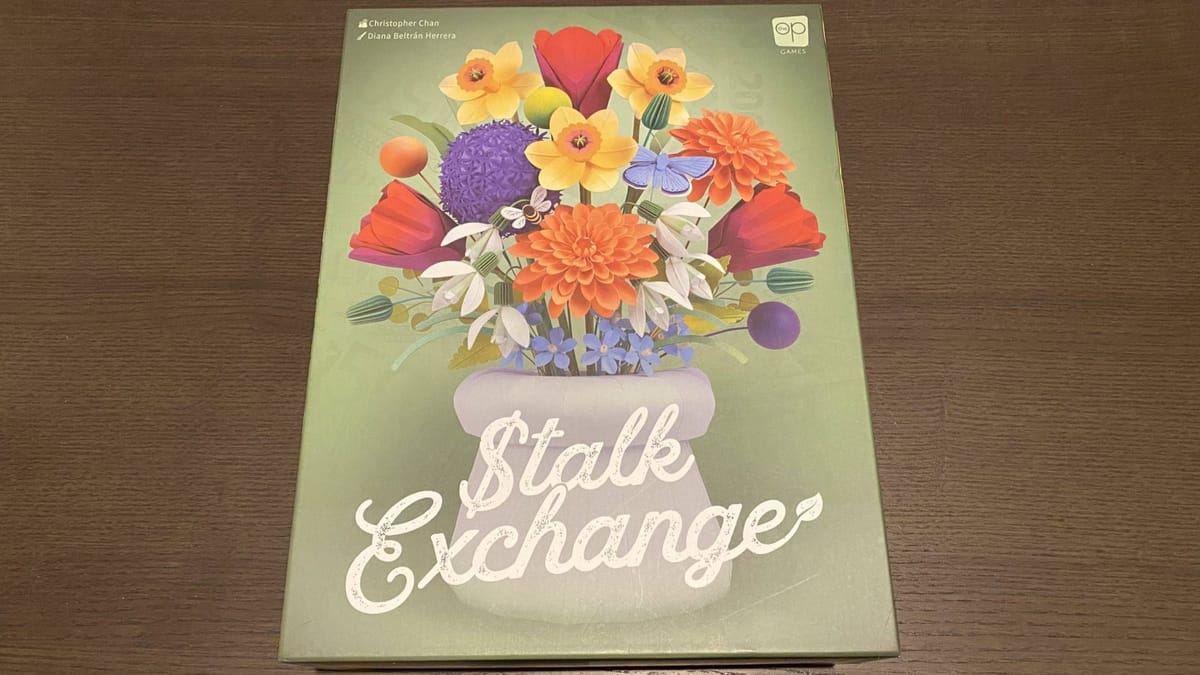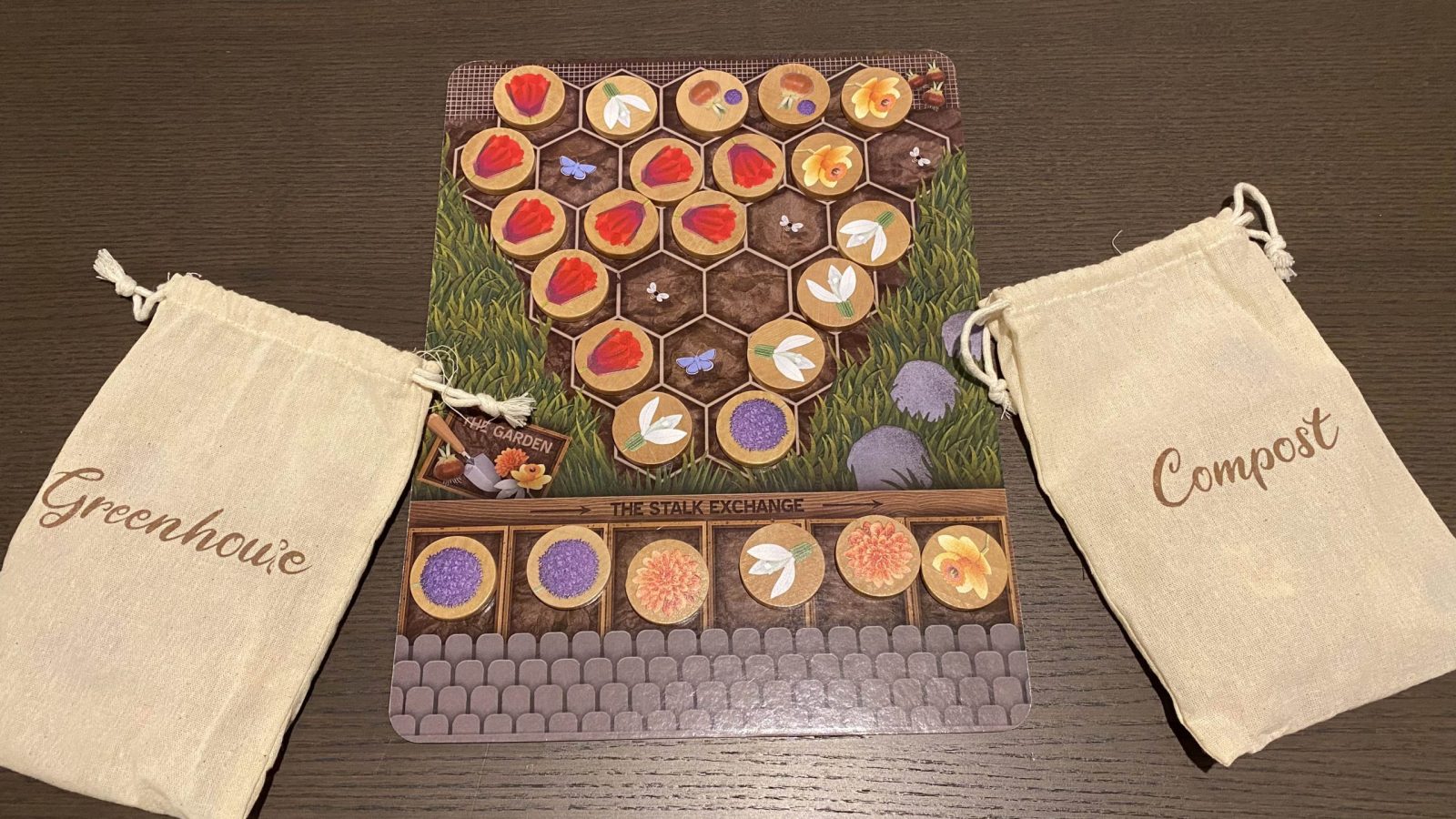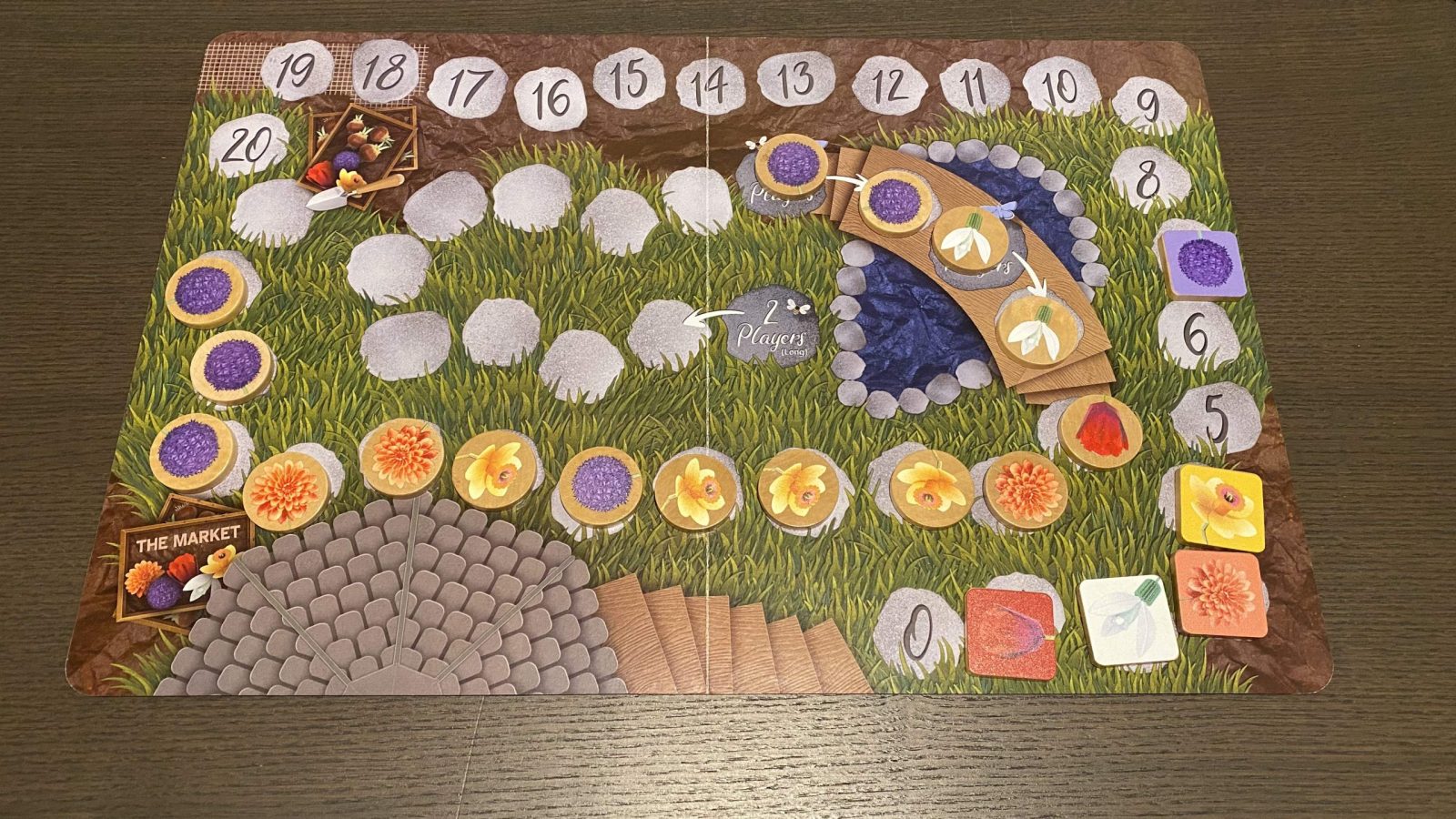
Stalk Exchange is the latest in the surprisingly long list of flower themed speculative stock games, but is this one worth investing in? I think it is.
The game is simple; on your turn you take two actions, either planting buds in the garden board or swapping your randomly dealt flowers with those in the market. If you want to spend your “seedy business” tokens you can take extra actions or flush the market, but there’s no way to get them back. After you’re done, any flower groups that are completely surrounded get harvested and add to that flower’s value. Any buds with enough room grow into flowers. The game ends once the harvested flowers and the value tokens cross paths. Before scoring, the highest valued flower crashes and loses half its value. Scoring itself is just multiplying the flowers in your stash by the flower’s final value.

Large patches are difficult to surround
The game is easy to get the hang of and the flowers you start with give you a good idea of what you want to start manipulating. If you find that other players are ignoring the color(s) you’re focused on, then you can try to pivot by exchanging for whatever they’re inflating. The endgame crash keeps any one color from running away too much and encourages players to diversify a bit.
That doesn’t stop players from making spiteful moves, of course. If a patch of flowers keeps expanding or the surrounding flowers are always being harvested, then your clump may never be harvested themselves. Alternatively, the flowers you’ve been pumping may be harvested at the very end against your wishes, causing them to crash while you watch in horror as your score plummets alongside them. Should never have trusted that they cared about my red flowers.

Some flowers are doing much better than others…
Because the turn actions are so simple and the market manipulation is visualized so well, the game is incredibly quick to teach, making for a very welcoming game. The stalk exchange board showing both the flower values and the harvested flower makes for a visual game timer, so nobody is really caught off-guard by the sudden conclusion. After everyone has at least one game under their belt it plays very snappy too, with only late-game decisions taking a bit of time. Depending on your player count, the garden can be very volatile since each player has less direct control, but the game would still be an enjoyable filler at worst. The flowers are all nice wooden tokens with flowers/buds on the reverse sides and they make a satisfying sound when you mischievously clink a giant stack behind your screen. Unlike many other market manipulation games, this one is very easy to get to the table and more hesitant players won’t be turned off by the theme of bright, colorful flowers.

I swear these reds will make me rich, just you wait ’till I harvest that patch!
Unfortunately, not every component is as satisfying. The game comes with two bags that the flower tokens sit in when not on the board. The compost bag, which is where they go after being kicked off the market row, and the garden bag, where they’re mixed and dealt out to form said market row. The compost bag is perfectly fine, since it never needs to hold very many tokens. But the garden bag is the same size, which is laughably small when you’re expected to both store and mix every single flower token inside it. It isn’t even a tight fit, there’s simply no possible way every token could fit inside that bag. I would go so far as to recommend that anyone purchasing this game have a properly sized bag available to replace the one included. This is very disappointing to me because it does impact the actual setup; I need to find a different way to shuffle the tokens. I do hope that if there are future printings of this game that they fix this glaring issue.
A minor nitpick, but typically in rulebooks when you see sidebars they serve to reiterate important rules or stress a concept upon the reader. Not so in this game. The red sidebars actually introduce rules that aren’t explained anywhere else in the book! This is the first time I’d ever encountered something like this and I was not a fan. However I will concede that of all the people playing this game, only the ones that teach the game would ever be bothered by this, as it doesn’t change the gameplay itself. Just be careful not to miss anything important.
Stalk Exchange
Good
Fast-paced gameplay with simple rules, held back by a need to replace the included bag.
Pros
- Easy to learn
- Snappy to play
- Welcoming market manipulation
- Nice wooden tokens
Cons
- Laughably small Garden bag, needs a replacement
- Odd rulebook format
